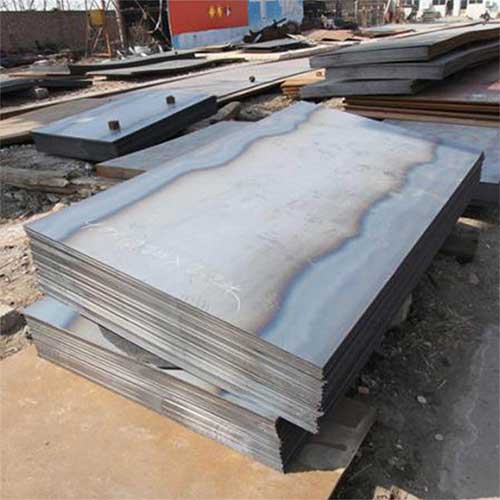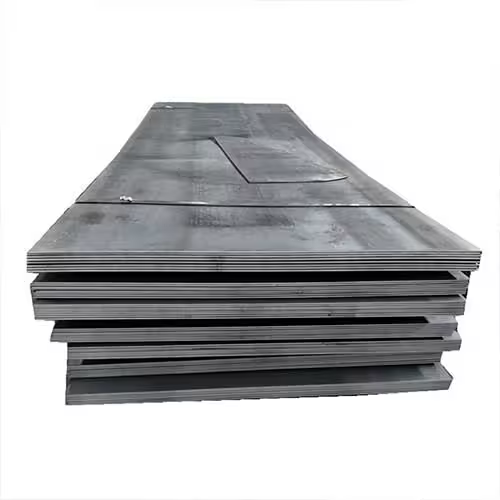مرحبًا بك في مدونتي!
قبل أن نتعمق في المحتوى، أود أن تنضموا إليّ على منصات التواصل الاجتماعي الخاصة بي حيث أشارك المزيد من الأفكار وأتفاعل مع المجتمع وأنشر التحديثات. إليك كيف يمكنك التواصل معي:
فيسبوك : فيسبوكhttps://www.facebook.com/profile.php?id=61565500692293
والآن، لنبدأ رحلتنا معًا. آمل أن تجدوا المحتوى هنا ثاقباً وجذاباً وقيّماً.
جدول المحتويات
مقدمة

When it comes to selecting steel plates for various industrial applications, understanding the dimensions and specifications is crucial. Steel plates are widely used in construction, manufacturing, automotive, and many other industries due to their strength, durability, and versatility. In this comprehensive guide, we will explore the key dimensions and specifications of steel plates, how to choose the right dimensions for your needs, and the factors to consider when selecting steel plates.
الفهم صفيحة فولاذية الأبعاد
What Are Steel Plate Dimensions?
Steel plate dimensions refer to the measurements of the steel plate, including its thickness, width, and length. These dimensions are critical in determining the suitability of the steel plate for specific applications. Steel plates come in various sizes and thicknesses to meet the diverse needs of different industries.
Key Dimensions of Steel Plates
- السُمك: The thickness of a steel plate is one of the most important dimensions. It determines the strength and load-bearing capacity of the plate. Common thicknesses range from 0.062 inches to several inches.
- Width: The width of the steel plate is another crucial dimension. It affects the overall size and usability of the plate in various applications. Widths can range from a few inches to several feet.
- الطول: The length of the steel plate is also an important dimension. It determines the extent of the plate and is essential for applications requiring specific lengths. Lengths can range from a few feet to several tens of feet.
Applications of Steel Plates
صناعة البناء والتشييد
In the construction industry, steel plates are used for structural components, such as beams, columns, and foundations. The dimensions of the steel plates are crucial in ensuring the structural integrity and stability of the building. Steel plates with appropriate thickness, width, and length are selected based on the specific requirements of the construction project.
Manufacturing Industry
In manufacturing, steel plates are used for creating machinery, equipment, and components. The dimensions of the steel plates are important in ensuring that the final products meet the required specifications and standards. Steel plates are often cut and shaped to fit specific manufacturing needs.
صناعة السيارات
In the automotive industry, steel plates are used for manufacturing car bodies, engine components, and other structural parts. The dimensions of the steel plates are critical in ensuring the safety and performance of the vehicles. Steel plates with precise dimensions are used to meet the stringent requirements of the automotive industry.
Shipbuilding Industry
In shipbuilding, steel plates are used for constructing the hull, decks, and other structural components of ships. The dimensions of the steel plates are essential in ensuring the strength and durability of the ships. Steel plates with appropriate thickness, width, and length are selected based on the specific requirements of the shipbuilding project.
Choosing the Right Steel Plate Dimensions


متطلبات التقديم
When selecting steel plate dimensions, consider the specific requirements of your application. For example, if you are working on a construction project, you may need thicker and wider steel plates to ensure structural integrity. In contrast, for manufacturing applications, you may need thinner and more precise dimensions to fit specific components.
سعة التحميل
The load-bearing capacity of the steel plate is directly related to its thickness. Thicker steel plates can handle higher loads, making them suitable for applications that require significant strength and durability. Ensure that the steel plate dimensions meet the load-bearing requirements of your project.
Space Constraints
Consider the space available for the steel plate in your application. If you are working in a confined area, you may need to select steel plates with smaller dimensions to fit the available space. Ensure that the steel plate dimensions are compatible with the space constraints of your project.
اعتبارات التكلفة
While steel plates with larger dimensions and thicker thicknesses may offer greater strength and durability, they can also be more expensive. Consider the cost implications of selecting steel plates with specific dimensions. Ensure that the steel plate dimensions provide the necessary performance while being cost-effective.
Comparison Table of Common صفيحة فولاذية الأبعاد

| Thickness (inches) | Width (inches) | Length (feet) | التطبيقات الشائعة |
|---|---|---|---|
| 0.062 | 24 | 8 | General manufacturing |
| 0.125 | 36 | 10 | Automotive components |
| 0.250 | 48 | 12 | Construction beams |
| 0.500 | 60 | 15 | Heavy machinery |
| 1.000 | 72 | 20 | Shipbuilding |
الخاتمة
Understanding the dimensions and specifications of steel plates is crucial for selecting the right material for your project. Steel plates come in various thicknesses, widths, and lengths to meet the diverse needs of different industries. By considering factors such as application requirements, load-bearing capacity, space constraints, and cost considerations, you can choose the right steel plate dimensions for your needs. Whether you are working in construction, manufacturing, automotive, or shipbuilding, selecting the appropriate steel plate dimensions ensures that your project is successful and cost-effective.
الأسئلة الشائعة
What are the key dimensions of steel plates?
The key dimensions of steel plates include thickness, width, and length. These dimensions are crucial in determining the suitability of the steel plate for specific applications.
How do I choose the right steel plate dimensions for my project?
Consider the specific requirements of your application, load-bearing capacity, space constraints, and cost considerations. Ensure that the steel plate dimensions meet the necessary performance requirements while being cost-effective.
Are steel plates with larger dimensions more expensive?
Yes, steel plates with larger dimensions and thicker thicknesses are generally more expensive. Consider the cost implications when selecting steel plate dimensions.
What are the common applications of steel plates?
Steel plates are commonly used in construction, manufacturing, automotive, and shipbuilding industries. They are used for structural components, machinery, car bodies, and ship hulls, among other applications.
How do I ensure the quality of steel plates?
Work with reputable suppliers who offer high-quality steel plates. Request material certifications and quality assurance documentation to ensure that the steel plates meet your specifications and requirements.

